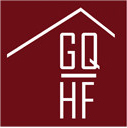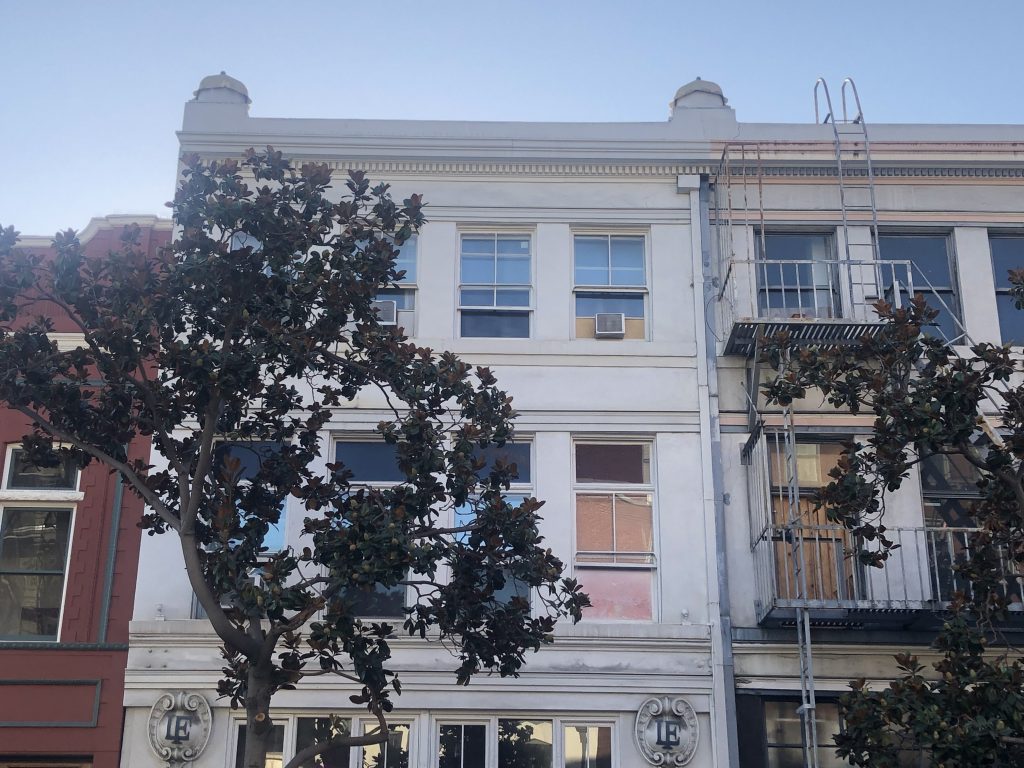Landmarks
Puttin’ on the Fritz!
The Fritz Building
( 1908)
756 – 760 Fifth Avenue
Architect – Edmond Blachman
Architectural Style – Modern Commercial/Elements of Italian Renaissance
During San Diego’s boom days in the 1880s, numerous people were arriving in our fair city. The unbeatable weather and boundless tourism provided many opportunities for enterprising businessmen to pursue their fortunes. Consequently, the influx of entrepreneurs put a premium on real estate. Venues were needed to house all the new commercial pursuits being put forth. As a result, many modern styled commercial structures were built. Since the main purpose of such a facility was to display merchandise or advertise services, most of the structures were relatively plain by Victorian standards with large display windows and fairly spacious interiors. How-ever, some were designed to provide not only utilitarian purposes, but also to reflect the elegance of the era and of the owner.
One such building was the Fritz .The owner of the structure was Louis Fritz, a German immigrant who was, additionally, one of the founders of the Golden Lion Cafe, a very popular restaurant and saloon on 4th Avenue. The new building, which cost $30,000, was to be used as a store and of-fices. Fritz selected Edmond Blachman as the architect, who designed the structure with architectural lines to coincide with the building to the north, the Loring and Company building. This provided an imposing facade of fifty continuous feet, which greatly enhanced the appearance on the street.
The building was a three-story plus basement, brick and steel structure , making it slightly taller than many of the surrounding buildings. The floors were supported on steel beams and columns, which, if exposed, were en-cased in concrete. This not only provided durability and strength, but was also more economical than brick. Concrete steps, with an attractive brass railing, lead from the sidewalk to the basement entrance.The building was capped by a flat roof with a parapet and decorative dentil moulding running across the entire length of the structure. There was also a decorative finial detail on the raised points of the parapet. An extra touch of elegance was the ornate medallion with the monogram “LF” in the center adorning the second level to the left of the street entrance. The “LF” refers, of course, to the original owner, Mr. Fritz.
Four double-hung sash style windows were placed evenly across the front of the upper floors. Transom windows were additionally placed above each of the windows on the second floor. Narrow decorative bands of painted moulding added interest to the simple architectural lines of the structure.
The facade of the building featured a recessed entrance flanked by large plate glass windows, which opened into a spacious vestibule. Although the outside of the building was relatively simple, the Italian Renaissance Re-vival elements are clearly visible in the interior of the structure. The main floor, designed to be a restaurant, featured a vestibule wainscoted with onyx and a dark Tennessee marble base. The dining area, with its coved ceiling and dentilled cornice was supported by pilasters, which formed pan-els decorated with hunting scenes. North of the main entrance was a hand-some stairway that lead to the second and third floors.
Equally as artistically designed, the upper floors featured doors, stairways and window moldings of Oregon pine. The 14 large apartments on these floors were equipped with clothes closets, washbowls, bathrooms and linen closets. Lavatories, the best on the market, were fitted with instantaneous heaters. The amenities and furnishings were elegant and comfortable. The building was both piped for gas and wired for electricity.
When the Fritz Building opened in 1909, one of the first tenants was the Denver Bachelor Apartments under the management of Mrs. Alice S. Poole. These new apartments were a departure from the usual way of providing accommodations for gentlemen. Firstly, the rooms were rented to gentlemen only. Secondly, no women or children were allowed ever, under any circumstances. It was stated that the rooms were kept in a spotlessly clean manner.
Mrs. Poole was a reporter for the San Diego Bee in 1886, and wrote under the pseudonym Helen E. Middleton. She reported on special features and also penned a society column. Mrs. Poole also built the first house in San Diego, at 1435 9th Street, that was equipped with modern plumbing! Al-ways active, she swam the San Diego Bay at the ferry crossing until she was past 60 years of age.
Mrs. Poole remained in command of the Denver until 1915, when it became the Minneapolis Hotel and Restaurant. The restaurant, located on the first floor, was known to cater to the prostitutes of the Stingaree area. As these ladies were not welcome above Market St. (then H St.), at meal times mes-senger boys on bicycles could be seen carrying trays of gourmet food to these ladies and their patrons. When City officials shut down the “red-light district,” the restaurant’s food delivery business suffered greatly! One might consider them the original GrubHub. Both restaurant and hotel continued well into the 1930s. While many things change, many remain the same!
Throughout the years, the downstairs location remained a series of restau-rants. It has been altered extensively, and is currently the home of the Myst Lounge, a bar, eatery and hookah lounge. The second and third floors re-main close to their original state, and are being converted to an Air B and B.
Sandee is the Historian and Lead Tour Guide for the Gaslamp Quarter His-torical Foundation. She can be reached at [email protected].

